How-To
This One Little Trick Increased My System's Performance by 400%
I recently had a chance to work with a Precision 3240 Compact Workstation. This is a neat little machine that has a six-core Intel Core i5-10500 processor and 16GB of RAM stuffed into a 7.4" x 2.75 x 7" case that takes a fraction of the space of a desktop system, partly because it has an external power supply.
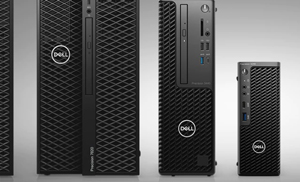 [Click on image for larger view.]
[Click on image for larger view.]
I really liked the system's design as it has a PCIe slot that I populated with an AMD Radeon Pro WX3200GPU.
The Problem
While I did like the system (as stated above) and used it for my day-to-day work, it did seem a little sluggish. When I tried to update the system from Windows 10 to 11, I got a message that I couldn't install it as the CPU speed was less than 1GHz.
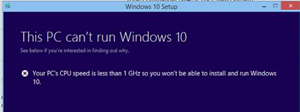 [Click on image for larger view.]
[Click on image for larger view.]
I brought up the system information and verified that the CPU was being reported correctly.
 [Click on image for larger view.]
[Click on image for larger view.]
I verified the CPU info at the Intel site. This showed a base frequency of 3.1GHz and a boost frequency of 4.5GHz.
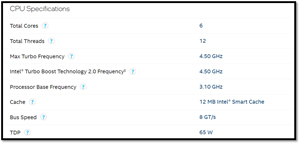 [Click on image for larger view.]
[Click on image for larger view.]
I searched the internet and came up empty on what would be causing this. I went down rabbit hole after rabbit hole and kept coming up empty. Then, after days of searching, I found my answer on Dell's Precision 3240 Compact Setup and Specifications page: a 240W power supply is required when a discrete GPU is being used (instead of the 180W power supply that the system was shipped with).
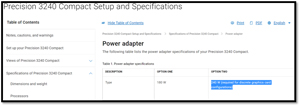 [Click on image for larger view.]
[Click on image for larger view.]
What the page didn't say is that the BIOS will reduce the speed to less than 1GHz if, on bootup, it detects the standard 180W power supply, which I had.
The Solution
I went to the 3240 accessories page and searched for the 240W power supply and only found the 180W one listed.
 [Click on image for larger view.]
[Click on image for larger view.]
I spent a few hours sleuthing around to find the correct power supply and ordered it. Once I used it, I no longer got the 1GHz warning and was able to update the system.
The Tests
I was curious how having the system dimmed down to 1GHz actually affected it, so I ran C-Ray (a multi-threaded CPU test) on it using Phoronix Test Suite. The test showed a score of 109.257 with the 240W power supply, and 28.979 with the 180W power supply.
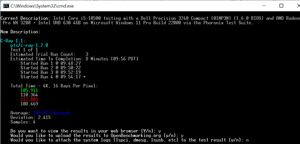 [Click on image for larger view.]
[Click on image for larger view.]
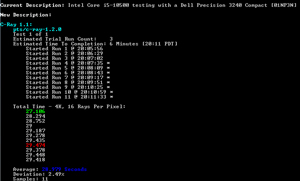 [Click on image for larger view.]
[Click on image for larger view.]
I then ran the test again and watched the CPU speed in task manager. This reported a speed of ~3.8GHz when running it with the 240W power supply
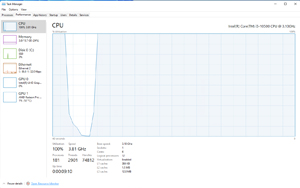 [Click on image for larger view.]
[Click on image for larger view.]
Resource Monitor showed all the cores being fully utilized when the test was running.
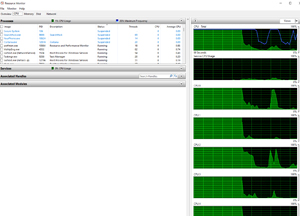 [Click on image for larger view.]
[Click on image for larger view.]
It should be noted that when I switched back to the 180W power supply, I got a message that an undersized power adapter was attached to it. I don't recall seeing this message the first time I powered on the system, or perhaps I just ignored it.
 [Click on image for larger view.]
[Click on image for larger view.]
Conclusion
By switching from a 180W power supply to the recommended 240W, I was able to increase my system's performance by about 400 percent!
About the Author
Tom Fenton has a wealth of hands-on IT experience gained over the past 30 years in a variety of technologies, with the past 20 years focusing on virtualization and storage. He currently works as a Technical Marketing Manager for ControlUp. He previously worked at VMware in Staff and Senior level positions. He has also worked as a Senior Validation Engineer with The Taneja Group, where he headed the Validation Service Lab and was instrumental in starting up its vSphere Virtual Volumes practice. He's on X @vDoppler.